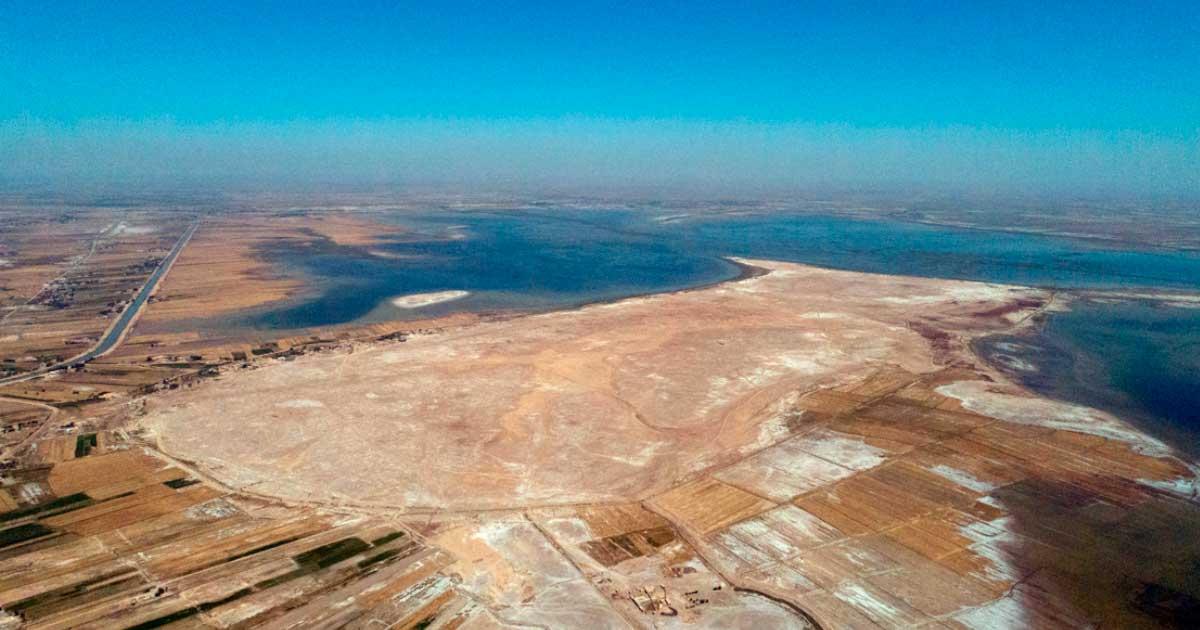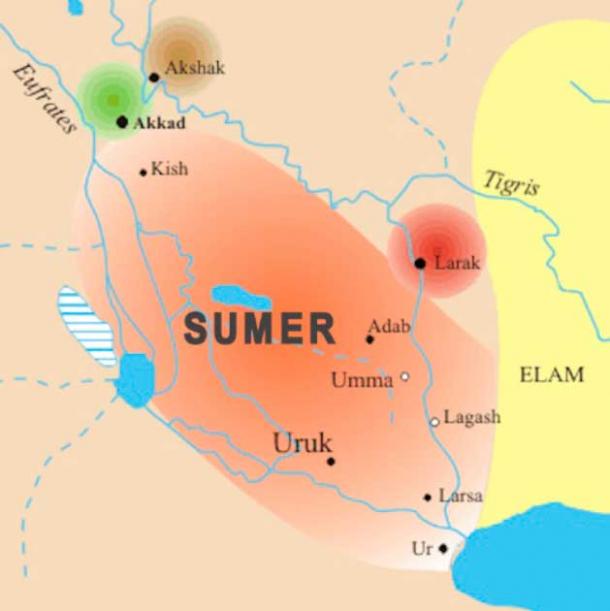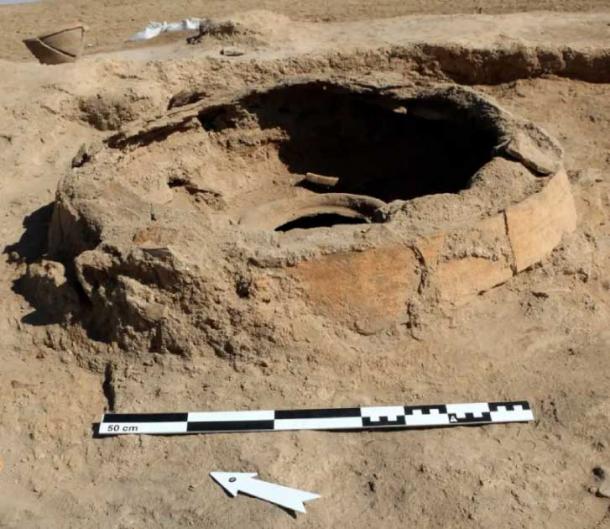
4,700-Year-Old Tavern Serves Up Surprises in Ancient Lagash, Iraq
Archaeologists have discovered a large tavern or public eating space dating to around 2700 BC at the ancient city site of Lagash in southern Iraq. Equipped with benches, a clay oven, storage jars with food scraps, and a zeer, an ancient clay pot equivalent of a refrigerator to keep food cool, the find is quite extraordinary.
Holly Pittman, professor in the University of Pennsylvania’s History of Art department, curator of the Penn Museum’s Near East Section, and the Lagash project director, said, according to a UPenn press release, “It’s a public eating space dating to somewhere around 2700 BC. It’s partially open air, partially kitchen area.”
The Ancient City State of Lagash
According to a 2022 article in Ancient Origins, the city of Lagash, known today as Tell al-Hiba, was located in ancient Mesopotamia, and is believed to have been established between 4,900 and 4,600 years ago and abandoned 3,600 years ago. This makes it one of southwest Asia’s earliest cities.
It has now been more than 40 years since excavations started in Lagash, a city of marsh islands. The latest round of excavations began in 2019, and despite pandemic-induced interruptions, has completed four intense seasons.
Cutting-edge methodologies are being employed in these fresh explorations, including drone photography and thermal imaging, magnetometry, which registers the magnetic intensity of buried structures and artifacts, and micro-stratigraphic sampling, a surgically-precise excavation technique. Extraction of sediment cores is helping study ecological development over centuries and millennia.
Six thousand years ago, the mouth of the Persian Gulf was around 150 miles (241 kilometers) northwest of its current location. Near it were three settlements—Girsu, Lagash, and Nigin—that together made up the city-state of Lagash. And for more than 150 years, the three were unified as a powerful political force that boasted rich resources. Lagash lies about 200 miles (321 kilometers) southeast of Baghdad.
- Lagash, the Lost City of Mesopotamia
- Drone Footage Reveals Lost Mesopotamian City Built on Marsh Islands

Location of Lagash before the expansion of the Akkadian Empire (in green), circa 2350 BC (Umma / CC BY SA 3.0)
Pittman is quoted in the UPenn press release as saying “At more than 450 hectares, Lagash was one of the largest sites in southern Iraq during the 3rd millennium. The site was of major political, economic, and religious importance. However, we also think that Lagash was a significant population center that had ready access to fertile land and people dedicated to intensive craft production.” Likening Lagash to Trenton, New Jersey, once the United States East Coast’s manufacturing center, she added, “In that way the city might have been something like Trenton, as in ‘Trenton makes, the world takes,’ a capital city but also an important industrial one.”
- A Drink Fit for Goddesses: Beer and Mankind in Ancient Mythology
- King Destroys Those on his Hit List, One by One – Eannatum: The First Conqueror? Part I

A drone photo of the trenches excavated in fall 2022, the most recent fieldwork season. The closest trench shows the tavern with a type of clay refrigerator called a “zeer,” an oven, and benches. (Lagash Archaeological Project)
The Tavern: A 4,700-year-old Public Eatery
The recent Lagash expeditions by the UPenn and University of Pisa team are focused on the lives of the common people living in the city’s urban neighborhoods around five millennia ago. Reconstructing the sequence of events, the Miami Herald wrote that while digging at one of these non-elite neighborhoods, Sara Pizzimenti, an associate professor at the University of Pisa and field director of the project, excavated a burnt structure. While several ancient burnt clay pottery kilns had been found in the area, this structure was different and turned out to be an oven.
Near the oven were a series of walls, benches and shelves. The shelves had collapsed but once had four levels, all stacked with bowls of food. On the other side of the room was a large circular structure made of a large pot and layers of pottery shards. Pittman recognized the half-buried structure as a zeer, an underground cooling device used like a refrigerator to keep foods and drinks cool.

The cooling device known as a zeer, which functions like an ancient fridge, found in recent excavations in Lagash. (Lagash Archaeological Project)
The team realized they had found a public eatery from 2700 BC. “We immediately dubbed it ‘the tavern’,” Pittman said, according to the Miami Herald. Fish and chicken bones were found in the bowls from the collapsed shelves. Apart from these, the eatery would have served beer and bread.

A brewery oven and dishes unearthed during previous excavations in Lagash (The Al-Hiba Publication Project)
Excavations of the neighborhood have also uncovered streets, alleyways, houses, pottery kilns, and many more artifacts, such as clay seals, stone tools, tokens, beads, jar stoppers and almost 37,000 pottery shards in the fall 2022 season.
Pittman said that the 4,700-year-old tavern offered a glimpse into the lives of ordinary ancient Sumerians. “Really, it’s beautiful… we were all very excited.”
Top image: Excavations continue at the impressive and expansive ancient city of Lagash. Drone photo of the site of Lagash (Tell Al Hiba) looking north. This spring was a particularly wet one in Iraq, causing the marshes to surround the site on three sides. Source: Lagash Archaeological Project
By Sahir Pandey
References
5,000-Year-Old Tavern Uncovered in Iraq. January 27, 2023. Available at: https://www.archaeology.org/news/11151-230127-iraq-lagash-tavern
Barbuti, A. January 28, 2023. 5,000-year-old ‘tavern’ discovered on archaeological dig. New York Post. Available at: https://nypost.com/2023/01/28/5000-year-old-tavern-discovered-on-archeological-dig/.
Berger, M. January 23, 2023. At a southern Iraq site, unearthing the archaeological passing of time. Available at: https://penntoday.upenn.edu/news/lagash-southern-iraq-site-unearthing-archaeological-passing-time.
Pflughoeft, A. January 26, 2023. 4 ,700-year-old ‘tavern’ — complete with fridge, oven and food — unearthed in Iraq. Miami Herald. Available at: https://www.miamiherald.com/news/nation-world/world/article271648927.html.
Pandey, S. October 15, 2022. Drone Footage Reveals Lost Mesopotamian City Built on Marsh Islands. Ancient Origins. Available at: https://www.ancient-origins.net/news-history-archaeology/lagash-0017401.















